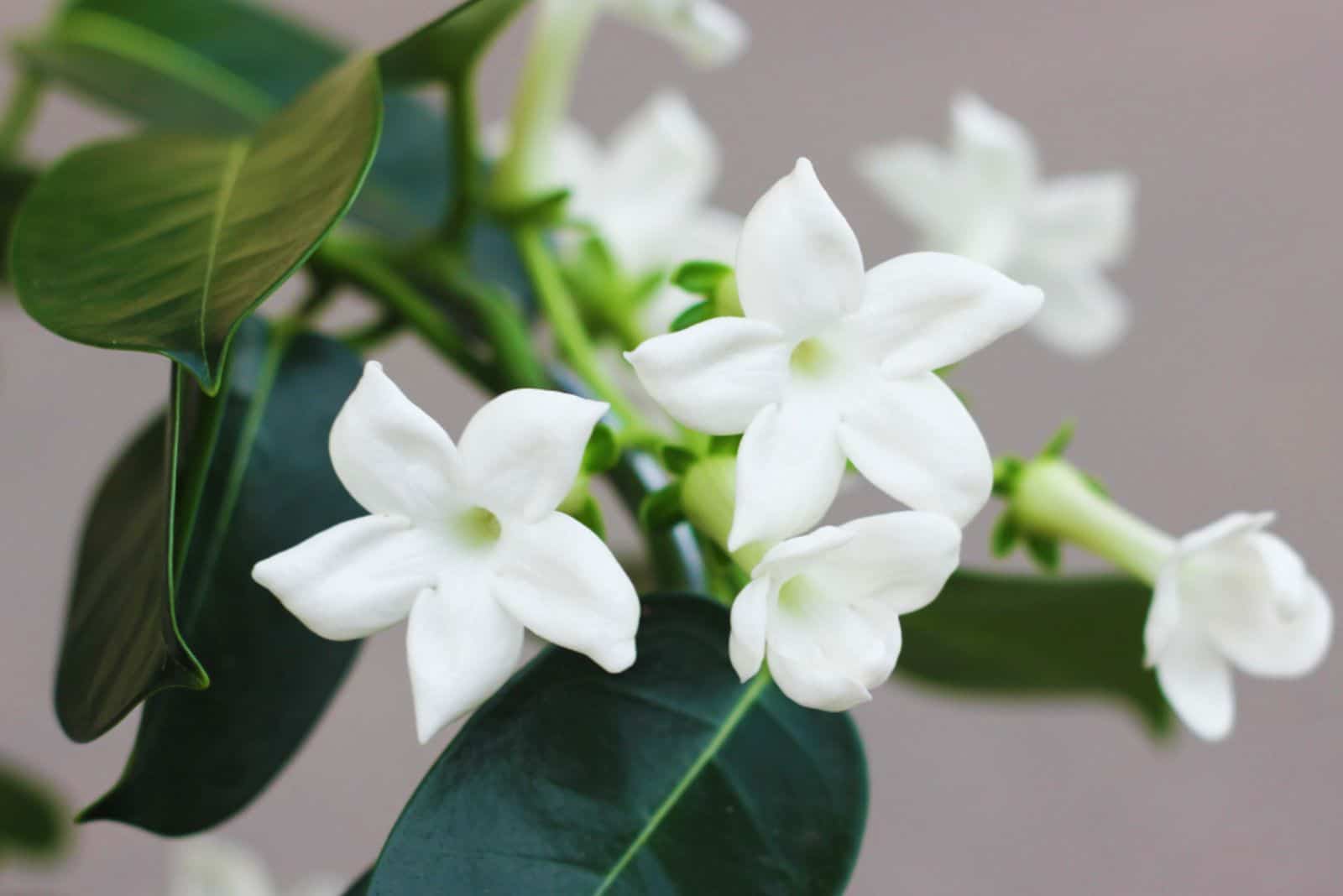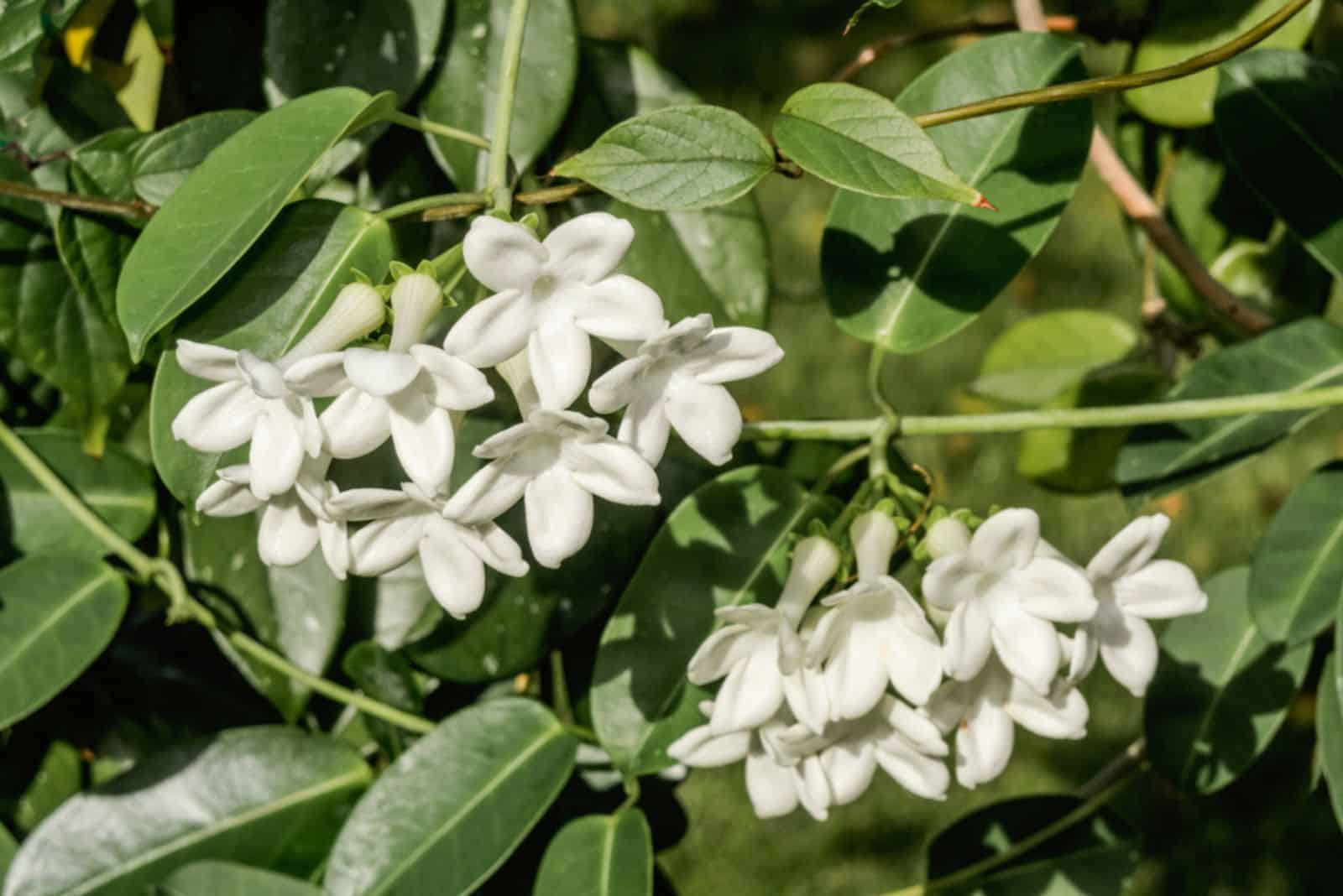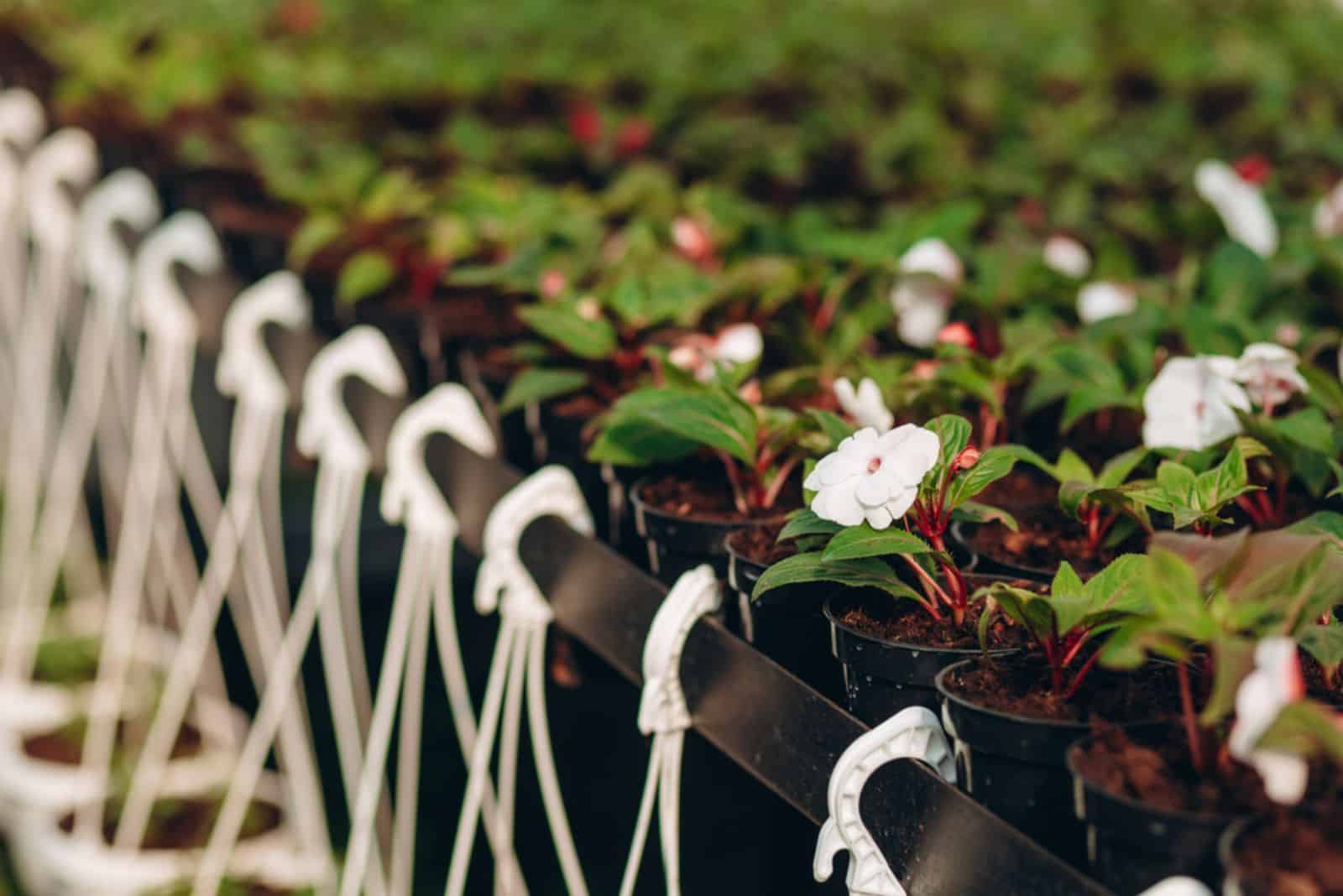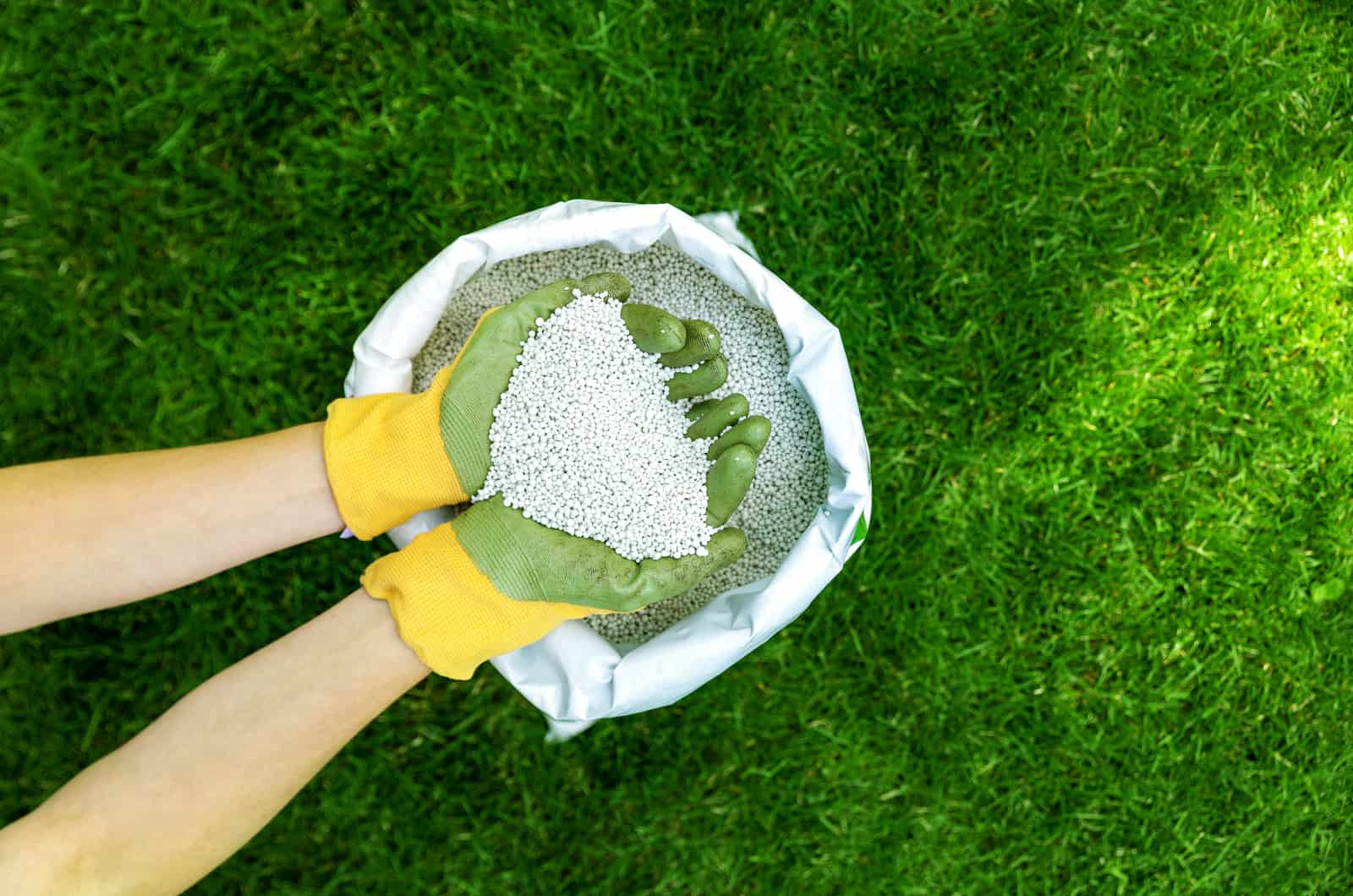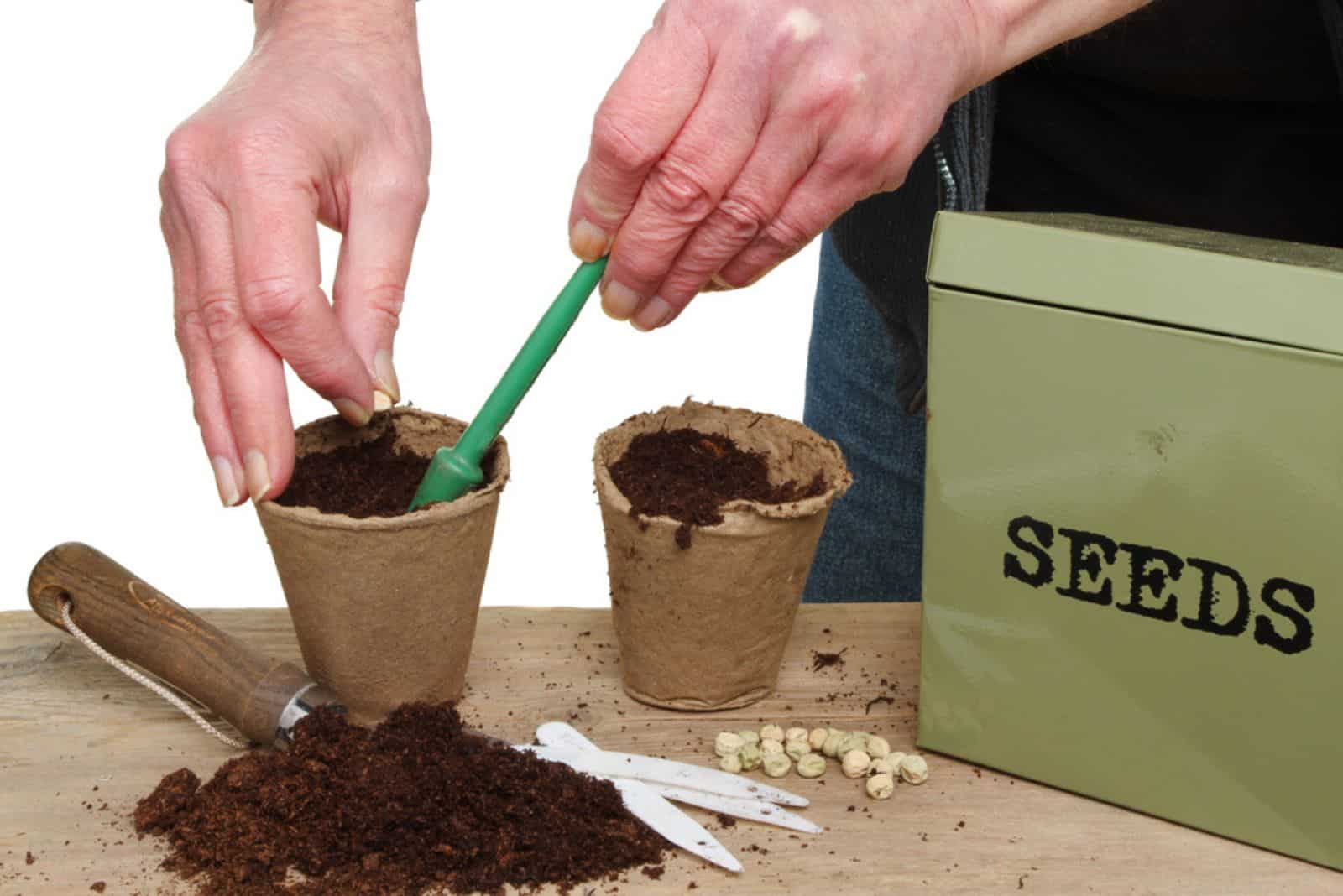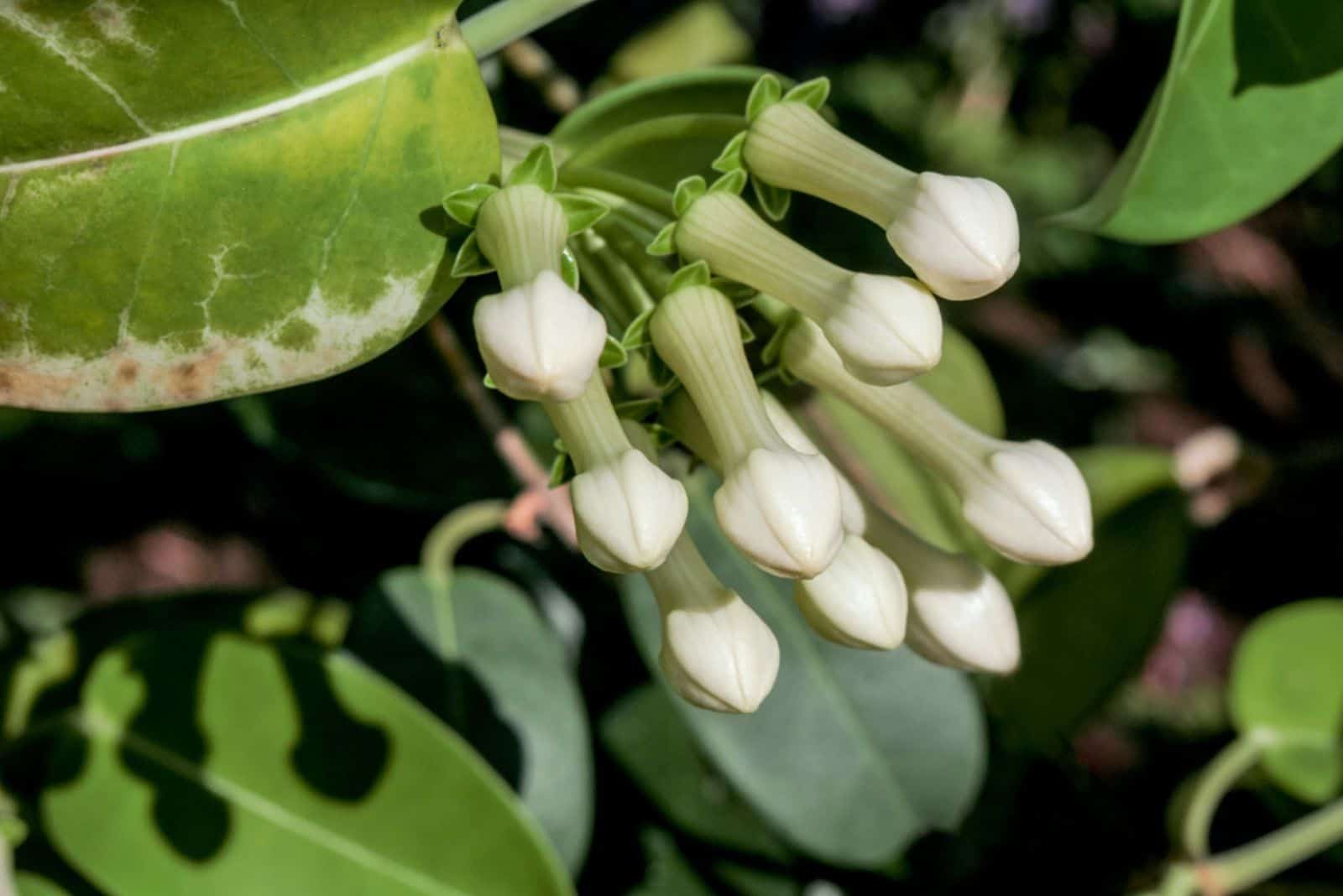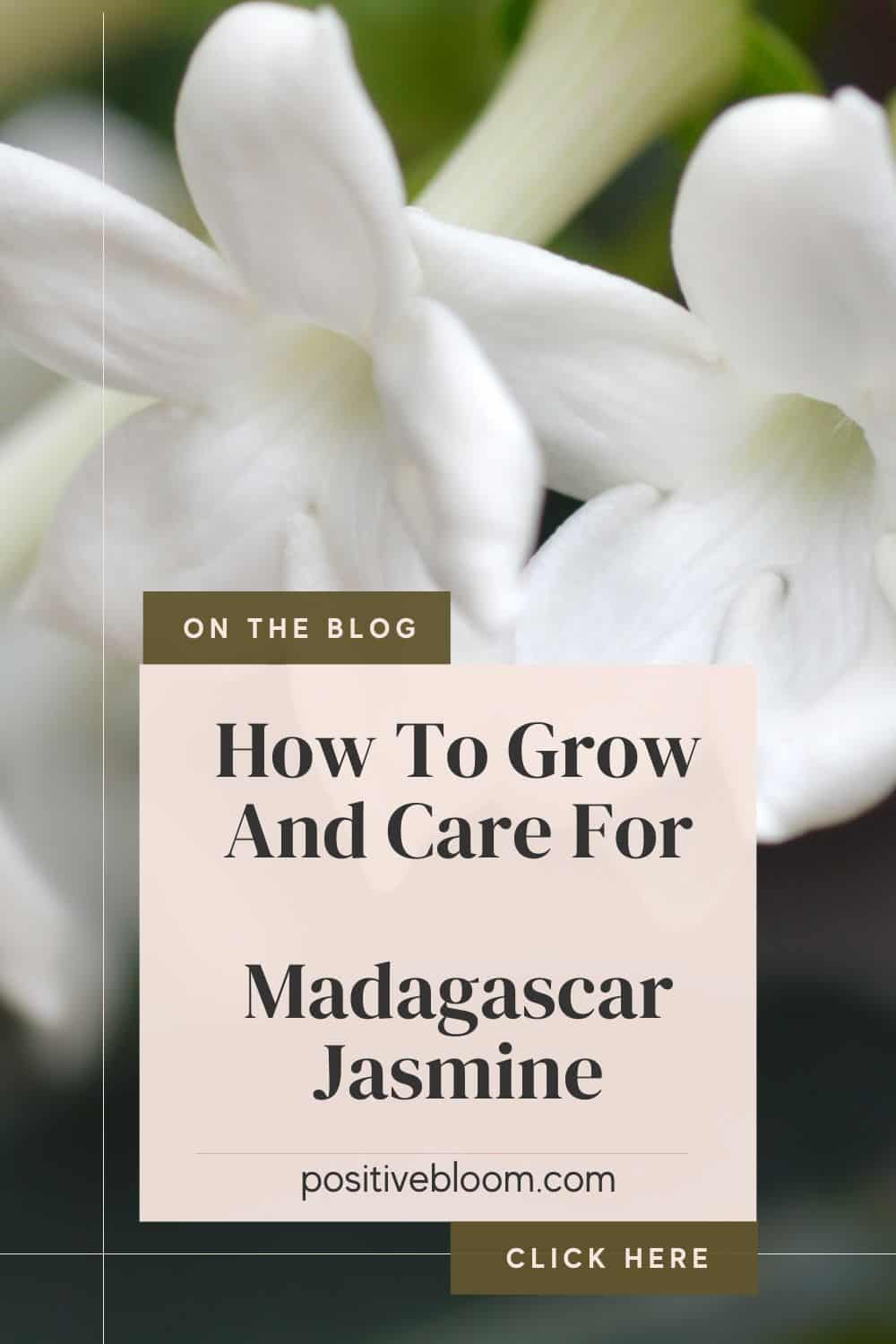Sometimes plants can be very similar in terms of appearance, growth rate or habit, size, and fragrance.
To help resolve some of that confusion, I’ll tell you more about a plant that smells like the well-known jasmine, but is actually a separate plant – Madagascar jasmine, a spectacular plant from the Apocynaceae family!
If you are looking for an unusual houseplant that will make your room smell amazing, then the Stephanotis floribunda is the right plant for you.
Let’s start with some basic info about the Madagascar jasmine:
[table id=508 /]
Let’s get started!
What Is Madagascar Jasmine?
The Madagascar jasmine has a twining-vining growth habit, which is one of the reasons this plant species is frequently grown as a houseplant.
Another special feature of the Madagascar jasmine is the flowers. The plant produces waxy, tubular flowers that develop into clusters. Their fragrance resembles that of jasmine, just like in the case of Rio dipladenia, aka Brazilian jasmine.
The star-shaped white flowers can appear any time of the year, but only if you ensure all the proper conditions. This refers to sufficient light, warm temperatures, and high humidity.
Growers also cultivate the waxflower plant to get unique flowers for bridal bouquets.
The plant actually got the nicknames “bridal wreath” and “Hawaiian wedding flower” because the flowers are frequently used in wedding bouquets.
But the amazing features of the Madagascar jasmine don’t end with the fragrant flowers. Even if the plant doesn’t produce any blooms, the oval-shaped, velvety leaves look breathtaking, especially if the plant is attached to a wire frame.
This plant is a climber and looks perfect on trellises.
Now it’s time to learn all the conditions required for the ‘false’ jasmine plant to thrive!
Madagascar Jasmine Care Guide
Many growers struggle with the blooming of the bridal wreath plant. The essential thing to remember is that this Stephanotis plant is native to tropical regions and is used to such conditions.
It may be challenging to mimic these conditions indoors, but it’s not impossible.
I’ll share some care tips with you in this article, and I’m sure you’ll see the blooms eventually.
Light Requirements
The bridal wreath plant needs a lot of light to produce flowers. The problem is that many beginner growers believe that full sun is the right level for plants that require a lot of light.
Well, that’s far from the truth. You should never expose the waxflower plant to full sun in the warmest parts of the day.
The morning sun isn’t strong and won’t harm your plant, so you should aim for a sunny spot that receives bright light in the morning and indirect sunlight during the afternoon.
An east- or west-facing window will provide partial sun, and your plant will get as much light as it needs.
Temperature And Humidity Requirements
The growing season of the waxflower plant begins in the spring and ends in the summer. During these seasons, the best temperature range is between 60 and 85 degrees Fahrenheit.
Unfortunately, these Stephanotis plants won’t tolerate colder temperatures. If you intend to cultivate them outdoors all year-round, don’t try unless you live in USDA hardiness zones 10 and 11.
Regarding humidity levels, you shouldn’t let the plant grow in dry air. You can mist it or group it with other houseplants. For instance, if you grow Phalaenopsis orchids or Hoyas, place them near your Madagascar jasmine to create a microclimate.
Although many argue about humidity trays and if they increase humidity, I recommend using them, especially if you don’t need to increase humidity much.
Soil
The Hawaiian wedding flower plant is susceptible to overwatering, and one of the best ways to avoid it is by choosing the right soil type.
Heavy soils retain too much water, and the delicate roots of the waxflower can’t survive in such an environment.
Soils that don’t contain materials that retain water also shouldn’t be an option.
You should find a middle ground. For instance, peat moss-based soils work best for this plant species. You can also add perlite and get a potting mix that will ensure enough water and also prevent water accumulation.
Watering
Watering is probably the most important factor of waxflower plant care. The bridal wreath plant has moderate watering needs. You need to water it more as it requires moist soil all the time, but you should be very careful not to add too much water.
After choosing the right type of soil, you need to create a watering schedule. There’s no fixed time that’s best to water the Hawaiian wedding flower, but checking the soil moisture content will help you decide.
Just inspect the soil regularly with your finger, and if the topsoil is dry, your ‘false’ jasmine plant needs water.
You’ll need to check the soil more frequently during the growing season as higher temperatures enhance water evaporation so your plant is thirstier than usual.
On the other hand, your Stephanotis floribunda plant won’t display new growth during the winter months. Therefore, don’t water it frequently during colder months as it’s easier to overwater.
Another thing to avoid is underwatering. The bridal wreath plant won’t tolerate drought, and it may cause severe issues that can lead to death.
Fertilizing
You’ll need to feed your waxflower plant to encourage growth and flowering. Fertilizers rich in nitrogen can enhance flowering.
Balanced plant food will also work well. In each case, pay attention to dosage and application.
Dilute the plant food to half strength and never apply more than recommended.
The roots of the Stephanotis floribunda plant are delicate, and too much fertilizer will have the opposite effect.
Repotting
If you are a beginner gardener, you’ll be happy to hear that the waxflower plant doesn’t need to be repotted frequently.
Expect to repot approximately every 2 years. There are three things to consider before you start repotting.
The first one is the size of the pot. The roots of the Hawaiian wedding flower won’t withstand too much soil around them, so aim for a pot that’s 1-2 inches larger.
The second thing is the drainage holes in the bottom. Another way to enhance water drainage is by using pots with drainage holes.
Finally, you need to prepare new soil. Two main reasons you should use a new pot are to avoid contamination and nutrient deficiency.
Check the root system once you take the bridal wreath plant out of its pot.
Even if your Madagascar jasmine doesn’t have diseases, you should never reuse the soil. By using new soil, you’ll ensure nutrients essential for healthy growth.
Give your plant some time to recover after repotting and ensure all the necessary conditions.
Stephanotis Floribunda Propagation
There are two plant propagation methods you can use to get a new Stephanotis floribunda.
The first one is seed propagation, but I would avoid this one. First, it’s time-consuming, and second, the success rate is pretty low.
The best way to propagate this Stephanotis plant is through stem cutting.
There are two things to consider before you start propagating. The first one is to select a non-flowering stem, and the second one is to choose a stem with nodes attached.
To encourage root development, you must insert the cut end in a rooting hormone. Then, you should plant the cutting in fresh soil and ensure all conditions.
Bright indirect light, high humidity, and warmer temperatures will help the Stephanotis floribunda stem cutting to develop healthy roots and grow into a new plant.
Common Issues
Indoor plants aren’t problem-free, and they depend on us in terms of water, food, and other conditions.
The fact is that we can’t get the exact same conditions indoors as in the natural environment.
Let’s see what can go wrong and how to fix it!
Madagascar Jasmine Doesn’t Produce Flowers
One of the most common issues growers have with this plant is a lack of flower buds. This flowering plant won’t produce flowers until every requirement is met.
If you have this issue, you must check the light level, humidity, and temperature. If these conditions are OK, feed your plant every two weeks during the growing season.
Also pay attention to watering, as underwatered or overwatered plants can’t grow or produce flowers.
Flowers Are Dropping
If you have ensured all the conditions and your Madagascar jasmine produced magnificent, white star-shaped flowers, but all of a sudden the flowers start dropping, don’t worry. This is not uncommon, and there are a few reasons why it happens.
If you change the location of the plant, it’s most probably stressed so the flowers might drop.
Two other reasons can be overwatering and underwatering. Check the soil of your waxflower plant to see if it lacks or has too much water.
Leaves Turning Yellow
Sometimes one or two leaves can turn yellow, which shouldn’t worry you; it’s completely normal for the plant.
If the yellowing spreads to other leaves, you have a problem.
The most common cause of yellowing is soggy soil. The roots of your Hawaiian wedding flowers are suffocated, and all other parts of the plant are left without food and water.
Low temperatures are another possible cause of yellowing. If the soil isn’t too wet, check the temperatures.
Pests And Diseases
The bridal wreath is a breathtaking plant, and mealybugs and scale pests strongly agree. These pests love the taste of the sap on the leaves, so they typically hide there.
Again, regular inspection can help you deal with all issues, including pests.
The sooner you spot them, the easier it will be to remove them.
If your waxflower suffers from a severe infestation, you’ll need to try some methods for pest control.
The most common disease in Madagascar jasmine is root rot, and the number 1 cause is overwatering.
If you notice any of the signs of root rot, you should repot your waxflower plant.
Wrapping Up
The Madagascar jasmine plant should definitely be on your wishlist. Although it may be hard to get it to bloom, it’s not impossible.
Now that you have our guide, I’m sure your Stephanotis floribunda will thrive and adorn your home for a long time to come.
Until next time!
Like this post? Share or pin it for later!

